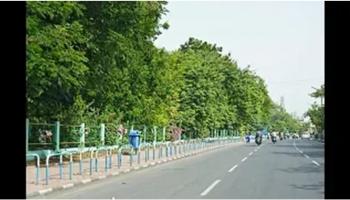Water Management
Man-made trouble in Bhimtal lake
Posted on 19 Mar, 2014 11:01 PMThe Himalayan region is facing an unprecedented onslaught of modernization. Large-scale construction, deforestation and pollution are taking a toll on it's pristine eciology. This includes the beautiful Bhimtal lake in Nainital district, Uttarakhand.

Water - not a gender-neutral resource
Posted on 19 Mar, 2014 10:46 PMWater is not ‘gender-neutral’, especially in India. It is the woman of the house who walks an average of 6 km each day to collect water for household use. In the Kumaon region, a newly married bride visits the family spring to fetch water a day after the wedding, in a symbolic tradition of water responsibility.

A multi-pronged approach to improve livelihoods in MP
Posted on 17 Mar, 2014 03:46 PMA little less than 40 km away from the district headquarters of Tikamgarh in northern Madhya Pradesh lies a watershed, which is an area of land where all of the water that is under it or drains off of it goes into the same place (US Environmental Protection Agency).

An 'Umbrella' for sustainable growth
Posted on 16 Mar, 2014 11:11 PMThe dependence on natural resources is ever increasing, and so is the need to manage it better. Rural communities are relatively more dependent on crucial natural resources such as land, water and forest, the exploitation of which directly affects their livelihood.

Technology and public awareness to combat climate change
Posted on 16 Mar, 2014 10:30 PMIn Jhansi, Bundelkhand farmers experience great uncertainties in agriculture due to erratic rainfall. Covering 13 districts of southwest Uttar Pradesh and Northern Madhya Pradesh with a population of approximately 21 million, Bundelkhand is a typical semi-arid region. Around 83% of the area is rural and more than one third of the households are considered to be below the poverty line.

It takes more than money to make a difference
Posted on 16 Mar, 2014 10:28 PMTamilnadu has a rich tradition of tank management at the village level. Every village had one or more irrigation tanks, locally known as ‘kanmais’ or ‘eris’, and a drinking water tank called ‘ooranis’. This system worked for centuries with the support of residents and the local administration.

Managing tanks - a bottom-up approach
Posted on 12 Mar, 2014 10:31 AMOur day-to-day dependence on fresh water is tremendous, whether for domestic or agricultural use. Theoretically, we know that it is a finite resource and that it can't be taken for granted but in practice, we do. India has an average rainfall of around 1150 mm but lets out nearly 1263 billion cubic metres of water into the sea unutilized.

Water fables from around the world
Posted on 12 Mar, 2014 09:55 AMChildren love bedtime stories. Fairy tales about kings, princesses, ogres and other magical creatures. For a change, what if we could tell them stories to make them aware of pressing issues that we are faced with. Like water, for example. 'Water Stories from Around the World' is one such compilation. It is a neat mix of stories with simple messages on conserving, using and respecting water.

Interventions of a voluntary agency: The MYRADA experience
Posted on 08 Mar, 2014 02:37 PMMYRADA has been working on watershed development projects since 1984-85. Through its efforts it had developed a climate of trust and confidence at the field level. Peoples' institutions have emerged and stabilised at various degrees of successes because of these efforts.

People's institutions managing natural resources in the context of a watershed strategy - A paper by MYRADA
Posted on 08 Mar, 2014 02:18 PMThis paper attempts to analyse the impact of several government guidelines related to watershed management on the People's institutions that have emerged in watershed programmes where NGOs have a role.








